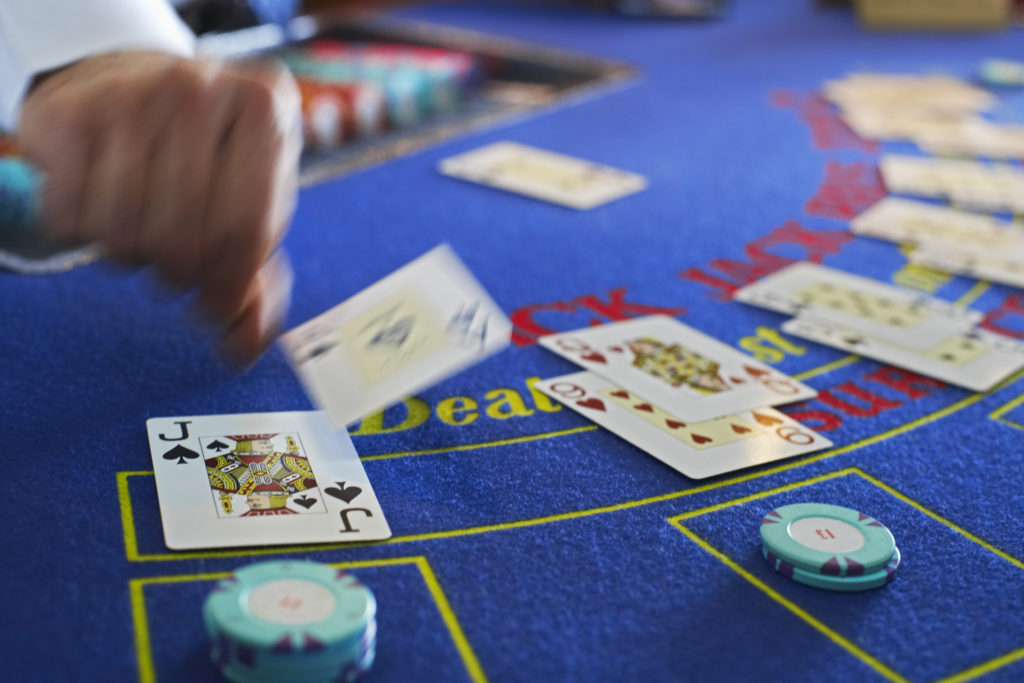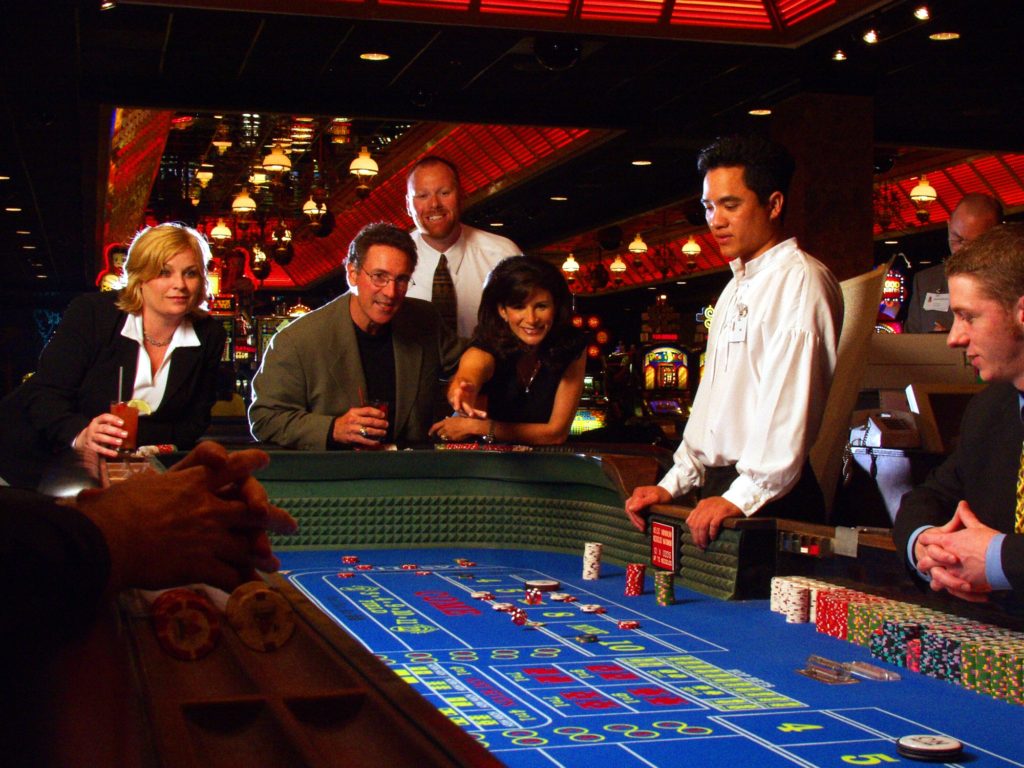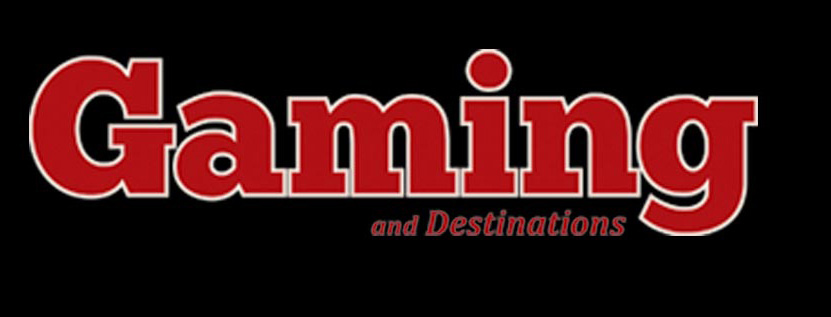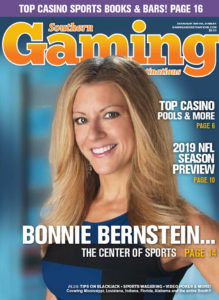 Casino games have built-in mathematical advantages favoring the house. For the most part, you cannot completely reverse that advantage and get an edge for yourself unless you learn to count cards at blackjack or play expert strategy at certain video poker games with favorable pay tables.But short of learning to count cards or playing video poker at an expert level, there are some things you can do to make sure you get the most out of what casino games have to offer. In this article, we highlight a few that will help you along the way without having to go to extremes of learning new systems and strategies. Good luck!
Casino games have built-in mathematical advantages favoring the house. For the most part, you cannot completely reverse that advantage and get an edge for yourself unless you learn to count cards at blackjack or play expert strategy at certain video poker games with favorable pay tables.But short of learning to count cards or playing video poker at an expert level, there are some things you can do to make sure you get the most out of what casino games have to offer. In this article, we highlight a few that will help you along the way without having to go to extremes of learning new systems and strategies. Good luck!
BLACKJACK
Everything starts with learning basic strategy. Players are getting better at this. In the early 1990s, casinos assumed they had about a 2 to 2.5 percent edge over average players. Today, the assumption is 1 to 1.5 percent.
Knowing basic strategy knocks that edge down even more. In a six-deck game in which dealers hit soft 17, you are permitted to double down on any first two cards, including after splitting pairs and may split any pair except Aces up to three times. You can also split Aces only once, and in which blackjacks pay 3-2, the house edge against a basic strategy player is 0.62 percent. It’s easy to find blackjack basic strategy charts online, and basic strategy references are usually included with any good book on the game.
Composition dependent strategies are also a way to lower the house advantage and can be easily implemented. For example, although the totals are the same, 10-6 and 8-5-3 are different hands, and a player who wants to move beyond basic strategy will treat them differently when the dealer has a 10 face up.
Against a dealer’s 10, the average player loss per dollar wagered if you hit are 53.5 cents on 10-6 or 9-7, while if you stand the average loss is 54.1 cents on 10-6 and 53.6 cents on 9-7.
In either case, you lose a bit more by hitting.
But if your 16 consists of 8-5-3, the average loss of 53.9 cents if you stand and is lower than the 54.4 if you hit.
On that hand, you actually trim your losses a tad by hitting. The composition of the hand is the key. With 10-6 or 9-7, the cards removed from the deck to make up your hand would bust 16 if they were available for a draw. With 8-5-3, two of the cards would improve 16 if available for draw, and one of them would give you 21.
The same goes for any play on 16 with three or more cards that includes a 4 or 5. If there’s a 4 or 5 in your hand, hit 16 vs. a dealer’s 10 instead of standing.
Similarly, there are a few hands where you can improve on basic strategy a tiny bit if you take notice of other players’ cards. In a six-deck game where cards are dealt face up, look around the table for 10-value cards and for small cards – 2s through 5s. If there are more 10s than smalls, stand on 16 vs the dealer 10 instead of hitting.
Other basic strategy plays to consider are:
- Hard 12 vs. dealer 4: HIT when there are as many or more 10s as smalls
- Hard 13 vs. dealer 2: HIT when there are at least five more 10s than smalls
- Hard 9 vs. dealer 2: DOUBLE when there are at least five more smalls than 10s
- Ace/7 vs. dealer 2: DOUBLE when there are at least five more smalls than 10s
- Ace/8 vs. dealer 6: DOUBLE when there are at least five more smalls than 10s
- 11 vs. dealer Ace: DOUBLE when there are at least six more smalls than 10s
Note that most of those flips come when there is an excess of at least five cards on one side. Other than 16 vs. 10, the only razor-thin close call is 12 vs. 4. The rest require extraordinary swings given that you’re relying on a single deal around the table.
So, how much of a dent can all this really make on the house edge? In his Blackjack Bluebook II, Fred Renzey calculates that you gain 0.03 percent with these adjustments. Those are small gains even by blackjack standards, where you gain 0.22 percent when the dealer stands on all 17s instead of hitting soft 17, or lose 0.1 percent if you’re not permitted to re-split pairs. The gain may be tiny, but it’s there for the taking.
THREE CARD POKER
Three Card Poker can be a very lucrative table game when you apply the correct strategy. Like with all games, a little luck needs to come your way, but these tips might help sway the edge a bit.
For starters, stick to ante-play. Three Card Poker offers two basic bets: ante-play and Pair Plus.
In ante-play, you first make an ante, then after you see your cards you may either fold or stay in action by making a bet equal to the ante. If your hand then beats the dealer, your ante and bet are both paid even money, but there are bonuses of five times your ante if you have a straight flush, four times the ante with three of a kind, or equal to the ante if you have a straight. If you follow the basic strategy of betting with Queen-6-4 or better or folding with less, the house edge is 3.37 percent of your ante or 2.01 percent of total action.
In Pair Plus, the dealer’s hand doesn’t matter. You win if your hand falls on a pay table that starts on any pair. The most common pay table is 40-1 on a straight flush, 30-1 on three of a kind, 6-1 on straights, 4-1 on flushes and even money on any pair. The house edge on that pay table is a staggering 7.28 percent making ante-play by far the better bet and Pair Plus a bet to avoid.
The original pay table, which returned 4-1 instead of 3-1 on flushes, had a house edge of 2.32 percent putting it in the same league as ante-play. That table is rare today, but should you find it, you might give Pair Plus a whirl. But under common current conditions, the house edge on Pair Plus is just too high.

CRAPS
Craps is hands down the most exciting game in the casino where high fives are common and a team like camaraderie is apparent. Your fate is left up to the roll of the die, but by placing the right bets, craps carries a low house edge.
Be sure to stick to multi-roll bets. Craps has a number of wagers available with house edges of less than 2 percent. None of them can be settled in one roll. Of the one roll bets, the best of them all is the field bet that carries a house edge of 2.78 percent if either 2 or 12 pays 3-1 while the others pay 2-1, or 5.56 percent if both pay 2-1.
Other than that, there’s a motley collection with sky-high edges including 11.11 percent on any craps and 16.67 percent on any 7.
Instead of these plays, look toward the best of the multi-roll bets, including pass or come (1.41 percent), don’t pass or don’t come (1.36 percent) and place bets on 6 or 8 (1.52 percent).
If your bankroll can handle backing pass or come bets with odds or laying odds with don’t pass or don’t come wagers, do so as they are better bets. In those cases, keep your line bets to the minimum, then add odds to bring the house edge on the combination to less than 1 percent – the precise edge on the combination depending on how much bigger your odds bet is than your line bet.

VIDEO POKER
You might think that video poker machines are totally random and there is no way to have an advantage. That may be somewhat of the case, but there are some strategies to put in place that if used correctly, you will lower the edge to be more favorable.
One of the easiest ways to lower your edge is to simply walk through the casino and check the pay tables before you play. Not all video poker pay tables are created equal. Jacks or Better with a 9-6 pay table — meaning full houses pay 9-for-1 and flushes 6-for-1 – returns 99.5 percent with expert play while the 8-5 version returns only 97.3 percent. Double Double Bonus Poker returns 99 percent at 9-6 and only 96.8 percent at 8-5.
Many casinos have games with different pay tables scattered around their floors. A game on the main floor might have a different table than a game in the designated video poker area, and both might be different than a game at the bar.
It can be worth your while to walk around and check pay tables. If you’re a quarter Double Double Bonus player, don’t just sit down at the first DDB game you see. Find out if there’s a better deal elsewhere on the floor.
You don’t have to know the precise payback percentages to see which games are better. Most of the time, the difference is going to come on full house and flush returns. Every increase of one unit in the return on those hands for a one-coin bet gets you a little more than an extra percent. If you see 9-6, 9-5 and 8-5 DDB, you know at a glance the 9-6 game is a little more than a percent better than 9-5, which is a little more than a percent better than 8-5.
Also, never make a four-coin bet. Video poker games give their highest payback percentage to those who bet the maximum five coins because a royal flush pays 250-for-1 coin, 500-for-2, 750-for-3 or 1,000-for-4. But the payout jumps to a 4,000-coin bonanza for a five-coin wager.
If you’re short of bankroll and want to have fun with one-coin bets, that’s between you and your bankbook. But NEVER bet four coins per hand. A four-coin bet gives the house its maximum profit, while betting the maximum fifth coin takes a little back for players.
You can also look at those royal flush returns as including a 3,000-coin payoff for wagering the fifth coin, with 250-coin pays for each of the first four coins wagered.
With that knowledge, you can break down the payback percentage per coin wagered. Take 9-6 Jacks or Better and its 99.5 percent return overall with expert play. If you wager 1, 2, 3 or 4 coins, the payback is 98.1 percent. What brings it up to the overall average is the 104.9 percent you get on the fifth coin.
Your average loss per four coins wagered is four times that with one-coin wagered, and that’s the maximum profit for the house. But the fifth coin works in your favor and cuts your losses.
Don’t give the house its maximum profit. Bet one coin if you must, but if your bankroll stretches to more, bet five and don’t stop at four.
_________
By John Grochowksi






